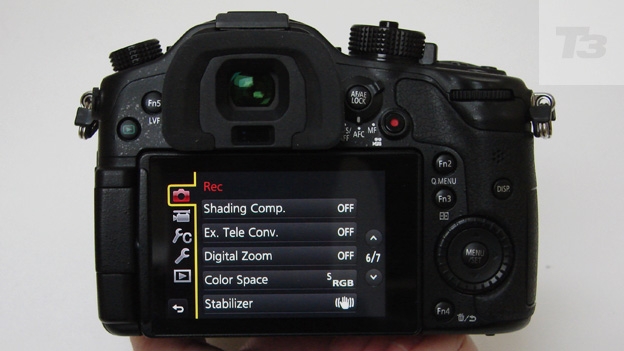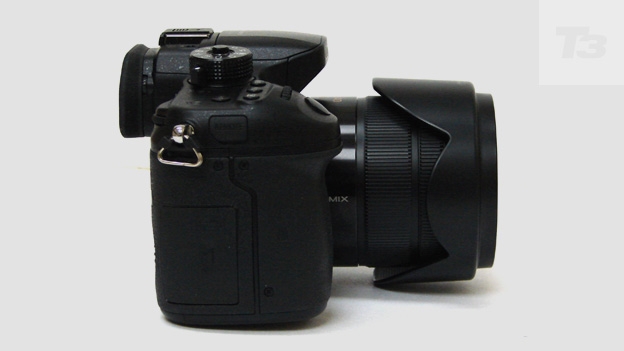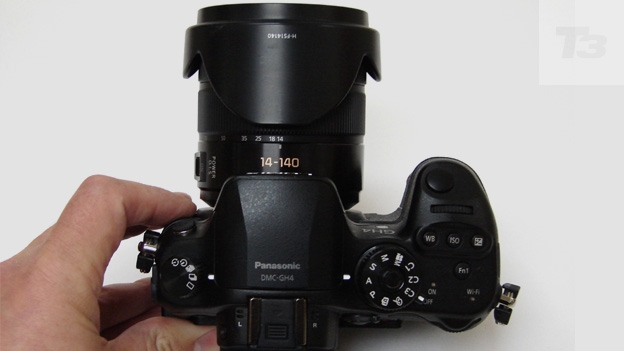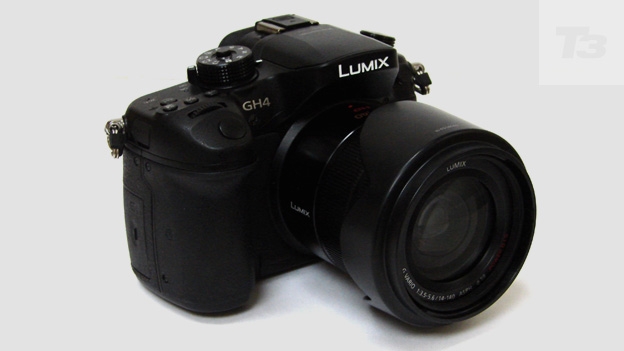Panasonic GH4 review
The Panasonic GH4 is the first compact system camera with 4K video


-
+
4K video shooting
-
+
Eye-level viewfinder
-
+
Fast and responsive
-
-
Pricey if you don't need 4K
-
-
Smaller sensor than rivals
-
-
No body integral anti shake
Why you can trust T3






This CSC comes with 4K video , tilting screen and viewfinder but is it too pricey for non-DSLR? Find out in our Panasonic GH4 review
Panasonic has always pitched its 'GH' series of Lumix system cameras as hybrid devices - as adept at shooting high-quality video as they at stills. The new 16.05 effective megapixel Panasonic Lumix DMC-GH4, in updating the Panasonic GH3, ups the ante by introducing 4K video capture to the range.
Not a total surprise perhaps, as the electronics manufacturer also produces 4K televisions. But until the Sony A7S camera was announced recently, it was the only interchangeable lens model with the facility, and remains one of a very select club.
If you're looking to capture video, the GH4 offers compatibility with the simultaneously announced SDXC/SDHC UHS-I 'Gold Series' media cards, issued in response to the introduction of 4K video and available in 16GB, 32GB and 64GB capacity.
Auto focus has long been pitched as both swift and accurate by the brand, with this automatically adjusting for video as well as stills, both composed via 2.4 million dot Live View Finder or impressively flexible 1.036 million dot swivel and tilt monitor just beneath. Ticking the required boxes, Wi-Fi and NFC connectivity is also built in.
The only thing that might be seen on paper as an Achilles' heel is the fact that the Panasonic camera incorporates a Four Thirds format sensor, which is physically smaller than the full-frame chip of the Sony A7S, and the regular APS-C format chip that could be found in a conventional DSLR for a markedly cheaper price than the £1,000+ being asked here.
Still, it's horses for courses and it's a damn sight easier to record video on the GH4 than the standard DSLR it resembles. Slightly spoiling us, Panasonic provided us with a 14-140mm Power Zoom out of the box, which provides a 35mm equivalent film range of double that - so a massively useful, all encompassing 28-280mm.
Panasonic GH4: Controls
There's a lot about this camera that immediately feels right when you pick it up. With 14-140mm zoom attached it's reassuringly weighty - just what you want with this sort of spend. It's fast too; flick the power switch that encircles the raised shooting mode dial plus central locking switch and you can be up and shooting as fast as your forefinger can get to the shutter release button.
The shooting mode dial features the traditional smattering of full automatic settings - such as the scene and subject-recognising intelligent Auto setting, as well as access to built-in digital effects - eight in total including our favourite of Expressive mode - plus three user definable custom settings.
The other smaller top plate dial on the left of the faceplate is for selecting the camera's various drive modes, including single shot and burst shooting, with this flagship model offering a very impressive 12 frames per second capture, which is right up there with the performance of video DSLRs.
As this is a semi-pro model, there are plenty of user definable function buttons dotted about the body, plus also a lever alongside the electronic viewfinder for switching focus mode between continuous auto focus - the camera hunting out subjects before you've actually squeezed the shutter release - or on a shot by shot basis; ie when the shutter release button is depressed halfway.
The beauty of a camera like the GH4 is that you can be as hands on or hands off as you like. We were able to just point and shoot and achieve excellent results.
Panasonic GH4: Screen
There's a good degree of flexibility provided governing how the 3.0-inch, 1,036,000 dot resolution screen is used; it can be flipped outwards from the body, as with a camcorder, and rotated to face the subject before the lens. It can also be flipped to face screen-inwards for added protection when transporting the camera.
Incidentally thanks to the above resolution the image provided by the monitor is searingly sharp; even in low light we discovered that colour and subject definition is excellent, the camera's auto focus visibly and automatically adjusting onscreen as you move through a scene.
Further more the camera's monitor is also a touch screen, so you can direct the camera's focusing to one corner of the frame simply via a finger tap.
And we love any enthusiast camera that includes a viewfinder that automatically switches on when you raise it to your eye, deactivating the screen below. The EVF is also ultra sharp in terms of viewing and comfortable to use as well, thanks to a large padded eye relief.
Panasonic GH4: Battery
The chunky lithium-ion rechargeable battery supplied with the GH4 is good for 500 shots from a full charge, which is much better than average for a compact system camera.
It's the kind of performance we'd expect from a consumer DSLR proper in fact, which therefore brings the GH4 onto more of a level playing field with the big guns from rival manufacturers, whether they be mirror-less cameras or not.
Panasonic GH4: Picture quality
Although we can shoot Full HD 1920x1080 pixels video at just under 60fps, the maximum frame rate for 4K (3840x2160) clips is just under 30fps - 29.97fps to be exact, not that we're exactly grumbling.
We have to select the MP4 video mode before we can access 4K capture - the default setting being Full HD clips in AVCHD compression format - not that this is an issue once 4K has been implemented via the menu screens.
On screen the results look as sharp as you'd expect - almost too sharp - it's slightly alarming to see yourself in 4K definition on a big screen for the first time, every line and blemish visible with a clarity that almost looks sharper than real life.
As we've noted the camera's AF is quick to catch up if you alter subjects or zoom in and out while recording, although busier or trickier scenes - such as branches of a tree rustling in the wind - will witness it going soft and sharp before definitively locking on target. Naturally there's always the opportunity to manually focus should one get better results that way.
As for still photographs these are flatteringly colourful without being unrealistically so and sharp too, even at the extremity of the zoom provided. The lens also aids attractive 'bokeh' effects (subject pin sharp, surroundings gradually blurred).
In terms of low-light shooting without flash, again the camera excels, though we'd recommend sticking at ISO1600-3200 if you want to avoid a gradually more painterly effect as image processing kicks in to avoid the appearance of noise/grain that has reached its nadir by maximum ISO25600.
Panasonic GH4: Verdict
The most obvious market for the 16.05 effective megapixel Panasonic GH4 is serious amateurs and semi professionals - perhaps weekend wedding or event photographers - who want a quick and convenient route to shooting 4K-video alongside high-quality stills, plus a small, light and convenient camera with which to achieve it.
You could even argue that professionals will find the GH4 of use if they're sick of lugging around a much heavier and bulkier DSLR, and don't actually need billboard-sized pictures. Yes it costs, but since there are only a couple of cameras yet with this capability at consumer prices, the outlay could very well be worth it.
Pansonic GH4 release date: Out now
Pansonic GH4 price: £1299.99 (body only), £1749.99 (with zoom lens)
Get all the latest news, reviews, deals and buying guides on gorgeous tech, home and active products from the T3 experts

Gavin Stoker has been writing about photography and technology for the past 20 years. He currently edits the trade magazine British Photographic Industry News - BPI News for short - which is a member of TIPA, the international Technical Imaging Press Association.